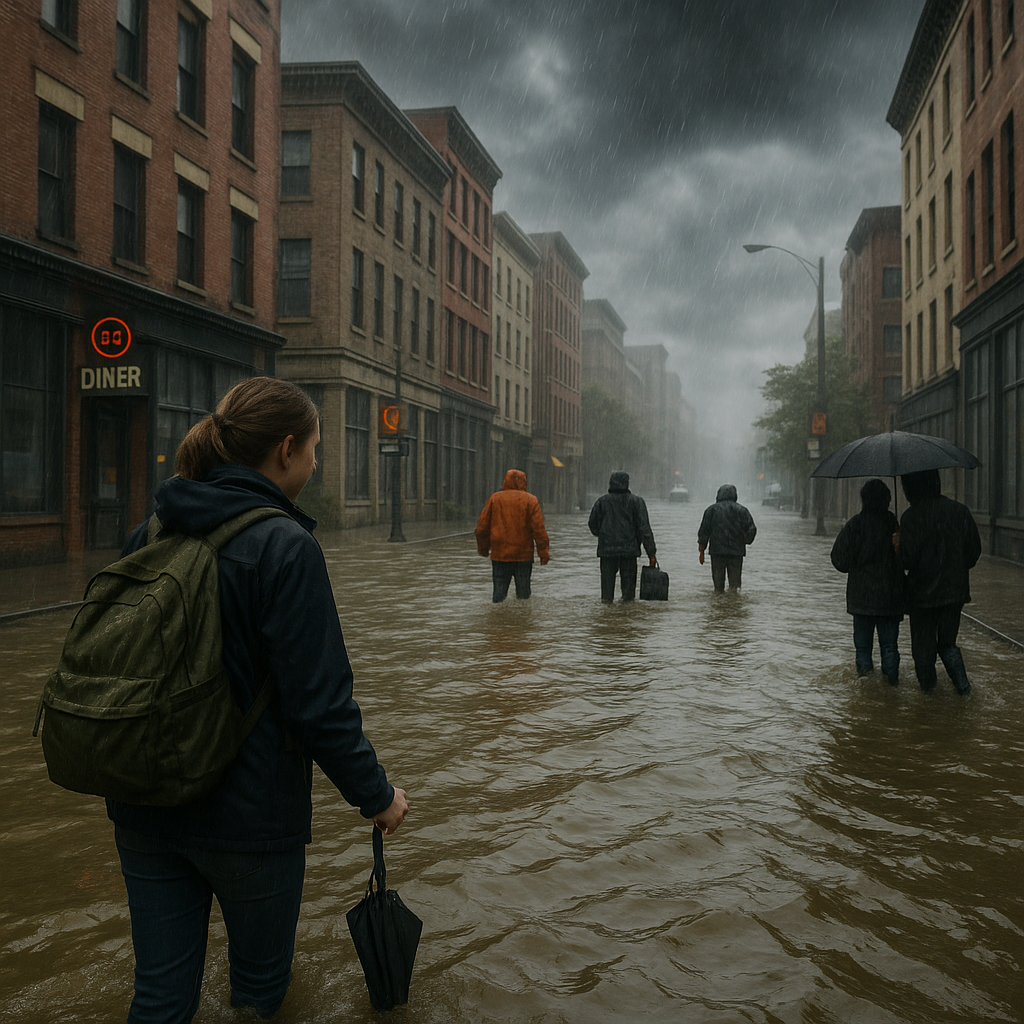When most Canadians think of hurricanes, they picture Florida, the Caribbean, or the Gulf Coast—not Toronto, Halifax, or Montreal. But the reality is that Atlantic hurricanes and their remnants have struck Canada many times, bringing widespread flooding, power outages, and billions in damages.
One of the most instructive examples for Canadian preppers is Hurricane Sandy (2012). Though its center made landfall in the United States, Sandy’s enormous reach caused power outages, storm surges, and flooding throughout eastern Canada. Cities like Toronto, Montreal, and Halifax saw infrastructure strain, disrupted transit, and long-term economic impacts.
If a similar storm made a direct hit, the effects on Canadian cities would be devastating. That’s why hurricane preparedness matters—even north of the U.S. border.
What Hurricane Sandy Taught Us
- Power Infrastructure is Vulnerable: In Ontario and Quebec, hundreds of thousands lost electricity when Sandy’s winds toppled power lines. Extended outages in urban centers paralyzed businesses, hospitals, and households.
- Transit and Supply Chains Grind to a Halt: Toronto’s GO Train service was suspended, highways flooded, and fuel deliveries stalled. Grocery shelves thinned quickly.
- Urban Flooding is a Major Risk: Canadian cities, especially older ones, have drainage systems not built for sudden surges. Sandy’s rainfall caused localized flooding in basements and underground transit.
- Economic Shockwaves: Even without a direct landfall, Sandy caused billions in damages to Canada. Imagine the effect of a storm of that magnitude striking Halifax or St. John’s head-on.
Canadian Hurricane Risks
While the Atlantic provinces face the highest direct risk, hurricanes or their remnants can hit Ontario, Quebec, and even Manitoba. The effects typically include:
- High winds causing widespread power outages.
- Storm surge flooding low-lying coastal neighborhoods.
- Heavy rainfalls overwhelming drainage systems and flooding basements.
- Infrastructure disruptions to transit, airports, and communication systems.
- Food and fuel shortages from supply chain interruptions.
Steps to Prepare for a Hurricane in Canada
1. Build a Hurricane-Specific Emergency Kit
Your basic prepper supplies should already cover food, water, and first aid, but hurricanes add unique needs:
- Heavy-duty tarps and duct tape for temporary roof repairs.
- Battery-powered sump pumps for flood-prone basements.
- Extra fuel and propane (stored safely) for generators and stoves.
- Cash, since ATMs and debit networks often go offline.
2. Secure Your Home
- Trim trees and remove loose items that can become projectiles.
- Install backflow valves on basement drains to prevent sewage flooding.
- Reinforce windows with storm shutters or plywood if a storm is imminent.
- Anchor sheds, propane tanks, and outbuildings.
3. Plan for Power Outages
- Invest in a generator or battery backup for critical systems like fridges, freezers, and medical devices.
- Keep flashlights, headlamps, and lanterns in every room.
- Store extra blankets, as outages often leave homes cold.
4. Evacuation Logistics
Flood-prone areas in cities like Halifax and St. John’s may face mandatory evacuations. Have a plan:
- Know your evacuation routes ahead of time.
- Keep your vehicle fueled (stations often run dry).
- Have “go bags” ready with essentials for 72 hours.
5. Community Resilience
Neighbors helping neighbors is often the difference in recovery. After Sandy, Canadian communities saw volunteers share generators, distribute food, and clear roads. Forming a Mutual Assistance Group (MAG) ahead of time ensures stronger resilience.
The Canadian Urban Reality
A hurricane striking Toronto, Montreal, or Halifax today would likely:
- Overwhelm hospitals already strained by seasonal surges.
- Shut down transit networks, isolating neighborhoods.
- Cause widespread fuel shortages within 48 hours.
- Lead to mass displacement if low-lying housing developments flood.
Preparedness isn’t paranoia—it’s recognizing that Canadian infrastructure and supply chains are fragile, and storms don’t respect borders.
Final Thoughts
Hurricane Sandy was a wake-up call that hurricanes are not just a southern problem. Canadian cities are just as vulnerable, and in many ways less prepared. With climate change increasing storm intensity, it’s only a matter of time before another major system makes landfall in Atlantic Canada—or even pushes deep into central provinces.
Preparedness is the antidote to vulnerability. By learning from Sandy, securing your home, building a hurricane-specific kit, and organizing evacuation logistics, you can keep your family safe when the winds rise and the waters surge.




